People who like tropical plants often ask for ID's for 'elephant ears' that they see or buy unidentified. I offer this as a way to decide what you have. Its not foolproof (where Alocasias are concerned) but its a good way to start.
There are many different kinds of Elephant Ears. Its a generic term for plants in the aroid group that have leaves resembling the ear of an elephant. There are several different genuses.....Caladiums are EE's. Arums are EE's. But the most commonly grown EE's fall into 3 genuses...Alocasia, Colocasia, and Xanthosoma.
Distinguishing between the 3 is pretty straightforward (in most cases). It all has to do with the sinus (the 'V' at the top of the leaf that separates the auricles...the 'ears') and the way the petiole attaches to the leaf.
Alocasias almost always point UP. They petiolar attachment makes the leaf point upward on most species and cultivars. Like this

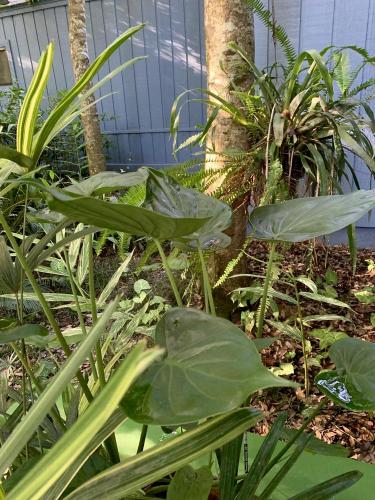
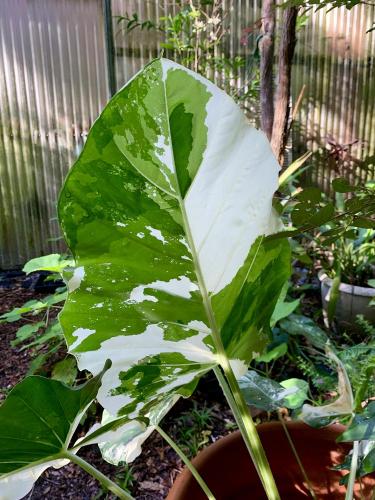

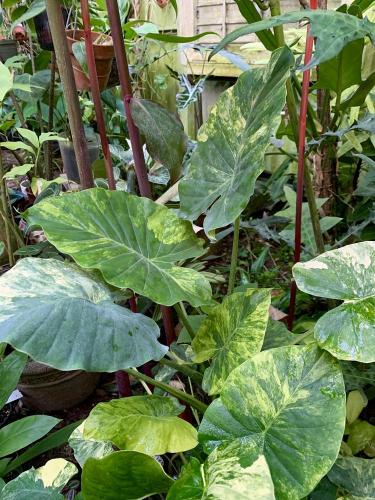

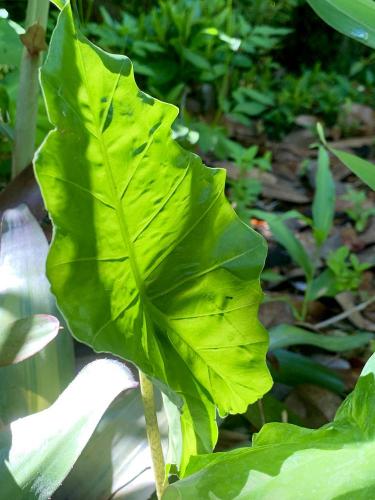
There are exceptions, however. Some Alocasias have leaves that are termed 'peltate' or 'quasi-peltate'. These plants have leaves with little or no sinus, so the petioles are set much farther down on the back of the leaf to allow the leaf to point up. Instead they will point OUT. Fortunately, most of these are in only a few groups, (longiliba/loweii, sanderiana, and Jewel) and are readily recognized by just their specific 'Look'.
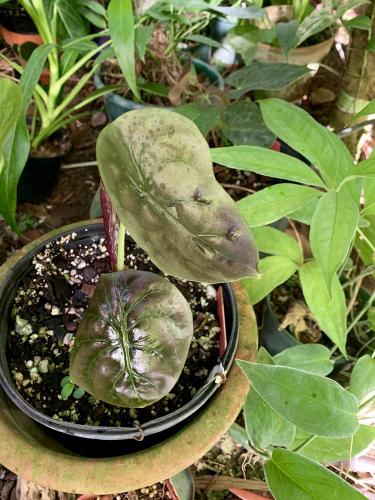

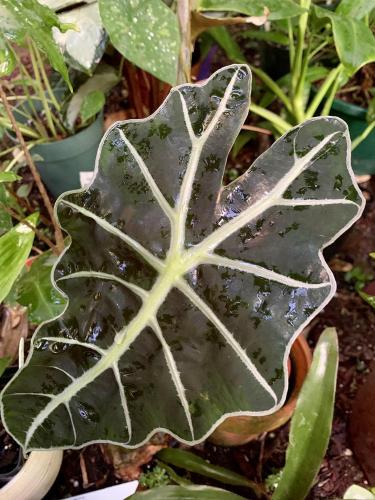
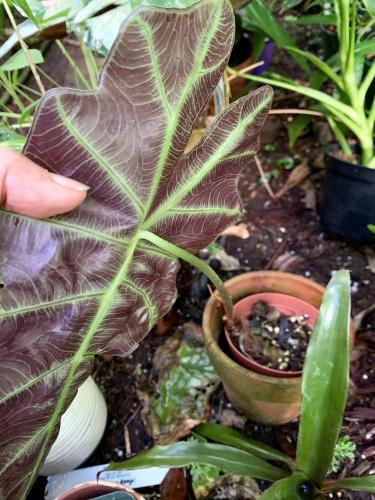
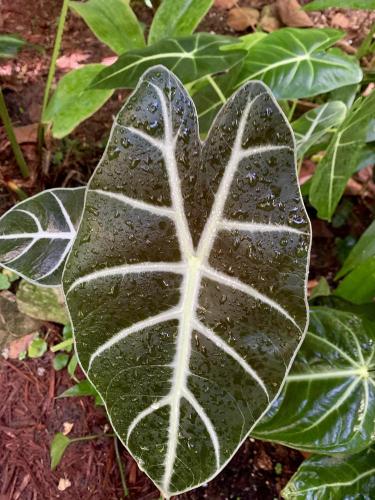
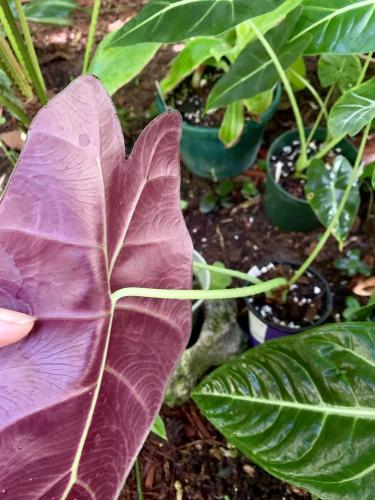
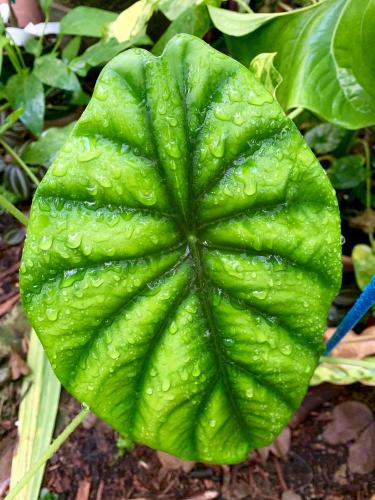

COLOCASIAS always point OUT. The leaf is arranged so you look at its face head on

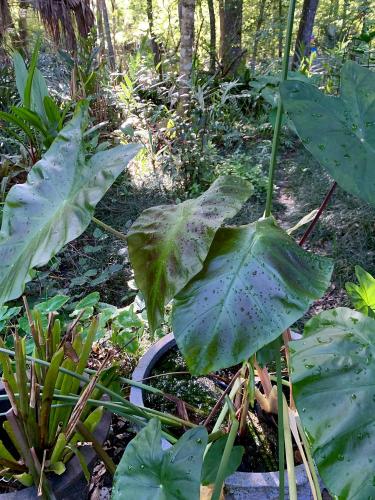
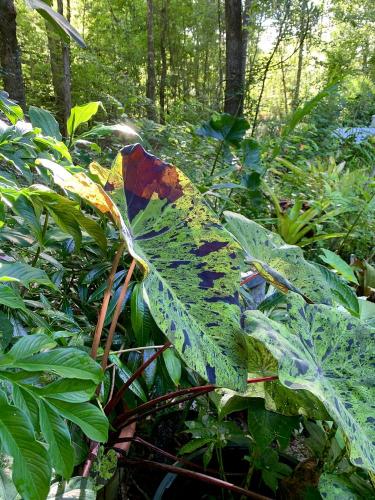
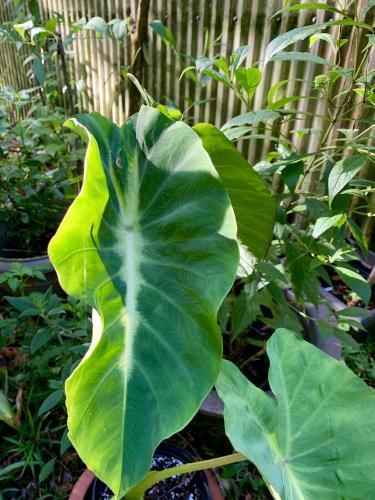
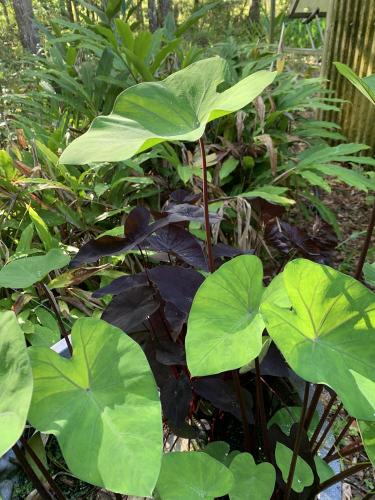

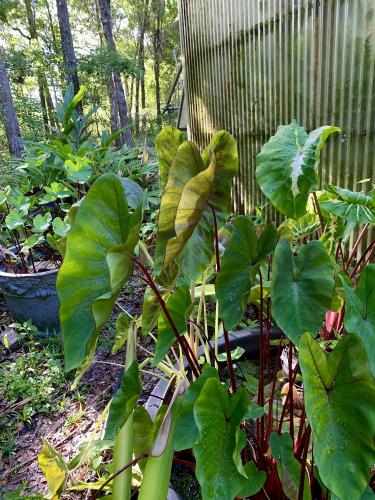
Xanthosomas are easily distinguished from the other 2 by the way their auricles are kind of squared at the top, not rounded. They also always tend to have a matte surface, and tend to be very large growing.
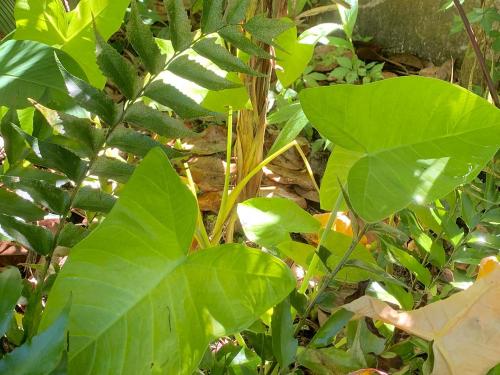
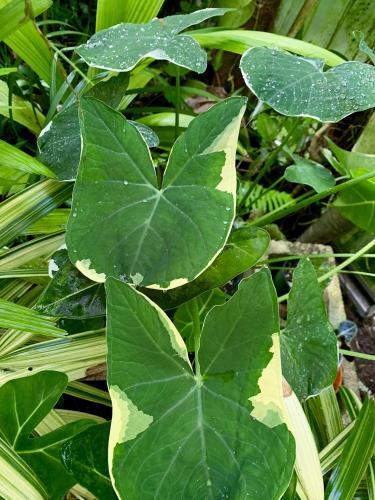


There are some rare 'aberrant' palmate forms of Xanthosoma that you are mostly unlikely to ever run across outside of a botanical garden, like this one...X. wendlandii
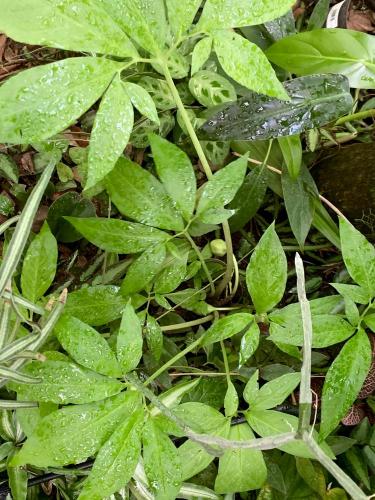
But by following the 'orientation' rule, you can usually differentiate between these 3 genuses without problem. Xanthosoma and Colocasia can be grown in ponds, tub gardens and bogs as aquatics or semi-aquatics. ALocasia, for the most part, cannot
Xanthosomas and Colocasias can form a trunk over time with age. Colocasia do not.


























